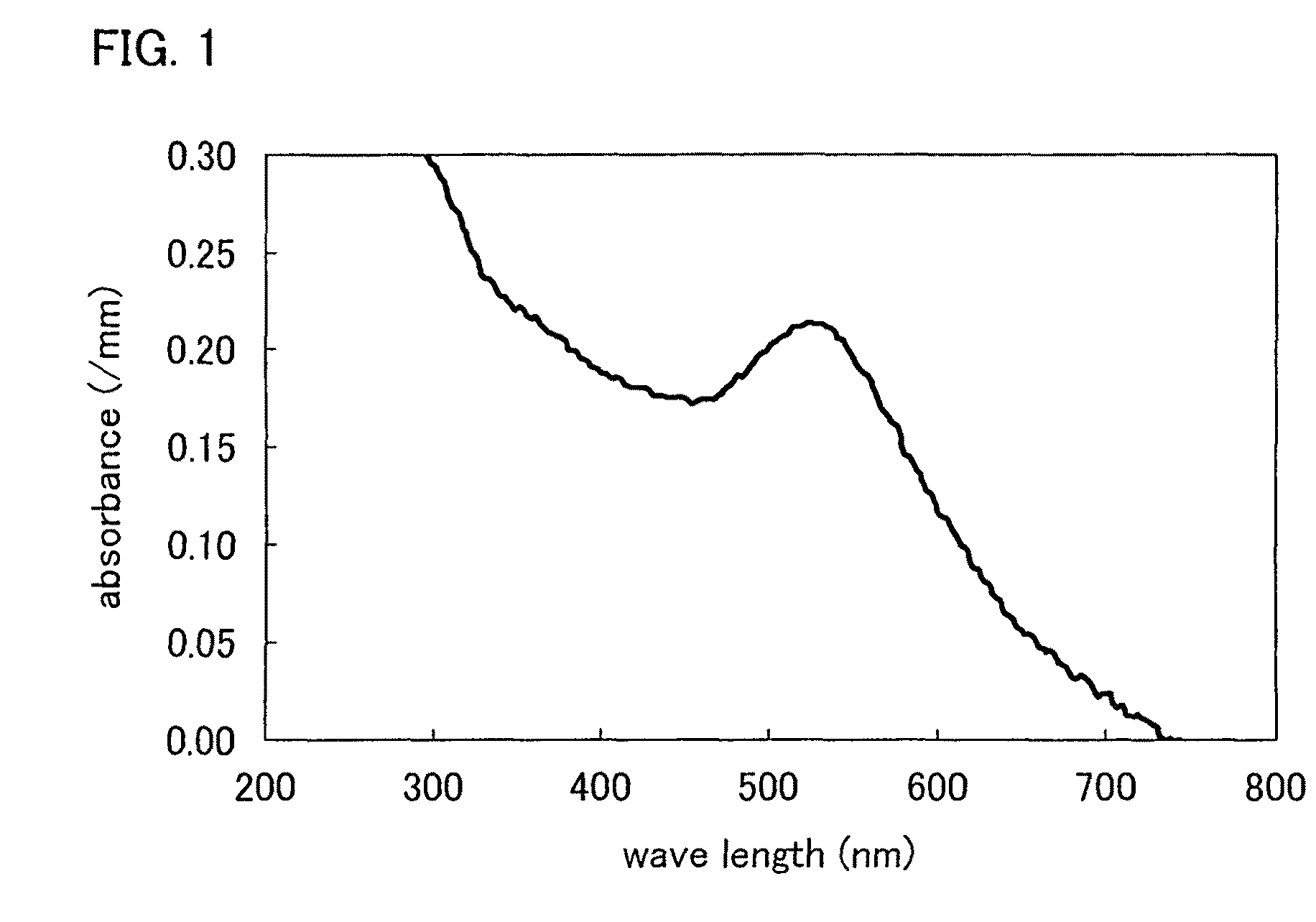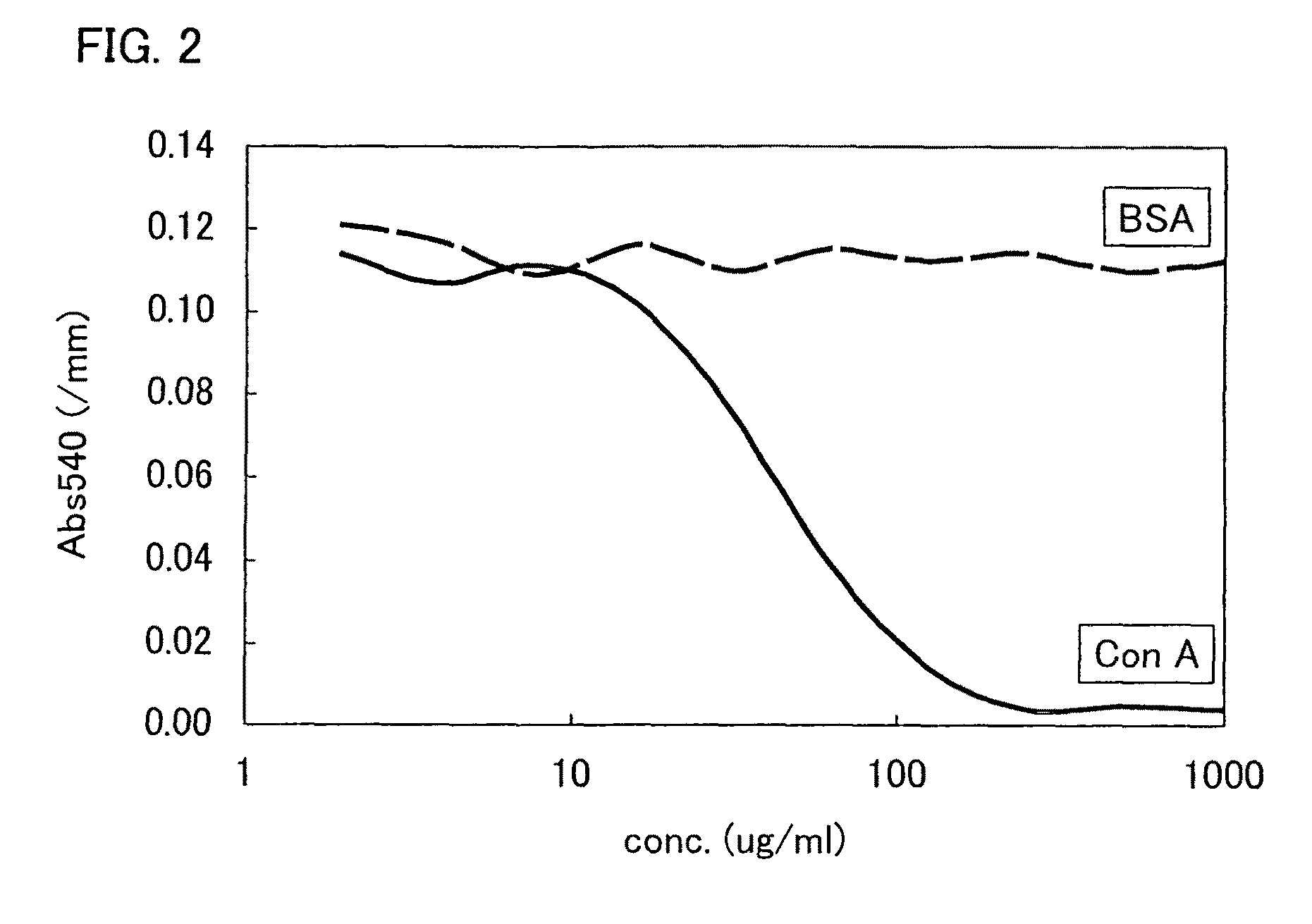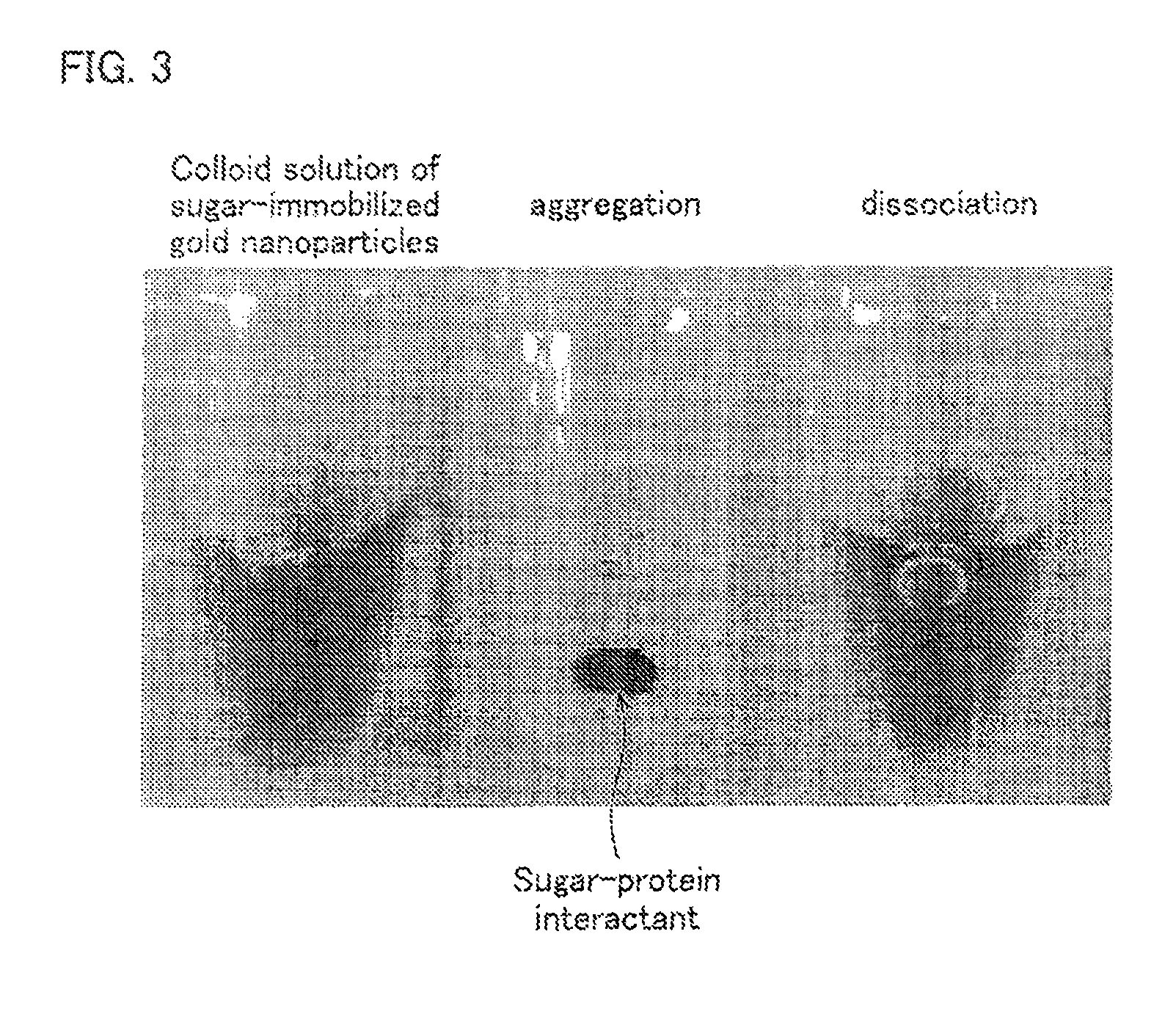Sugar-immobilized metal nanoparticle, method for measuring sugar-protein interaction using the same and method for recovering protein from sugar-protein interactant
a metal nanoparticle and sugar-protein technology, applied in the field of sugar-protein interaction recovery methods, can solve the problems of affecting measurement variations, difficult to perform measurement conveniently, and require very expensive equipment, and achieve the effect of preparing the sugar chain
- Summary
- Abstract
- Description
- Claims
- Application Information
AI Technical Summary
Benefits of technology
Problems solved by technology
Method used
Image
Examples
example 1
Preparation of Maltose-Immobilized Gold Nanoparticles
[0107]Sodium chloroaurate (III) and sodium borohydride were vigorously stirred and mixed with water so that final concentrations of sodium chloroaurate (III) and sodium borohydride are 1 mM and 5 mM, respectively, thereby preparing a solution of gold nanoparticles. Ligand complex was a compound of thioctic acid, m-phenylenediamine, and maltose (molar ratio of 1:1:1). To the ligand complex, water was added to obtain a solution of ligand complex with a final concentration of 100 pM. The solution of ligand complex was added to the solution of gold nanoparticles. Then, the resulting mixture solution was vigorously stirred and mixed, thereby preparing a colloid solution of crude maltose-immobilized gold nanoparticles.
[0108]Next, the colloid solution of crude maltose-immobilized gold nanoparticles was transferred to a dialysis tube (MWCO:3,500) and subjected to dialysis with water and PBS-T (0.05%), thereby purifying the colloid solutio...
example 2
Measurement of Sugar-Protein Interaction
[0109]Dilution series (PBS-T (0.05%)) of concanavalin A (hereinafter referred to as “ConA”; manufactured by EY Laboratories Inc.), which is a protein that recognizes maltose, and dilution series (PBS-T (0.05%)) of bovine serum albumin (hereinafter referred to as “BSA”; manufactured by SIGMA), which is a non-maltose-recognizing protein, were placed at 10 μM and lower concentrations on 96-well titer plate (25 μl per well). Then, the colloid solution of maltose-immobilized gold nanoparticles was added to each of the diluents so that a ratio between the colloidal solution and the diluent is 1:1. The resulting mixture solution was left for 30 minutes to 2 hours. After aggregation of the maltose-immobilized gold nanoparticles was completed, the result was evaluated by visual observation and measurement of ultraviolet-visible absorption spectrum (540 nm).
[0110]FIG. 2 is an ultraviolet-visible absorption spectrum showing sugar-protein interaction betw...
example 3
Recovery of ConA from Sugar-Protein Interactant
[0113]100 μl of PBS-T (0.05%) solution containing ConA at 250 μg / ml was placed in an Eppendorf tube. To the solution was added 100 μl of the colloid solution of maltose-immobilized gold nanoparticles which was prepared in Example 1. Then, a mixture solution was vortexed for at least 10 seconds. Thereafter, the resulting mixture solution was left for approximately 2 hours, and a sugar-protein interactant was precipitated out of the mixture solution by centrifugation. Then, supernatant thereof was removed, and the sugar-protein interactant was washed with PBS-T (0.05%) solution and water several times. After the washing, 100 μl of 200 mM glucose aqueous solution was added to the sugar-protein interactant, and the resulting mixture solution was left for approximately 1 hour. The result was evaluated by (i) visually observing return of ConA from the sugar-protein interactant to the colloid solution of maltose-immobilized gold nanoparticles ...
PUM
| Property | Measurement | Unit |
|---|---|---|
| molar concentration | aaaaa | aaaaa |
| molar concentration | aaaaa | aaaaa |
| pH | aaaaa | aaaaa |
Abstract
Description
Claims
Application Information
 Login to View More
Login to View More - R&D
- Intellectual Property
- Life Sciences
- Materials
- Tech Scout
- Unparalleled Data Quality
- Higher Quality Content
- 60% Fewer Hallucinations
Browse by: Latest US Patents, China's latest patents, Technical Efficacy Thesaurus, Application Domain, Technology Topic, Popular Technical Reports.
© 2025 PatSnap. All rights reserved.Legal|Privacy policy|Modern Slavery Act Transparency Statement|Sitemap|About US| Contact US: help@patsnap.com



